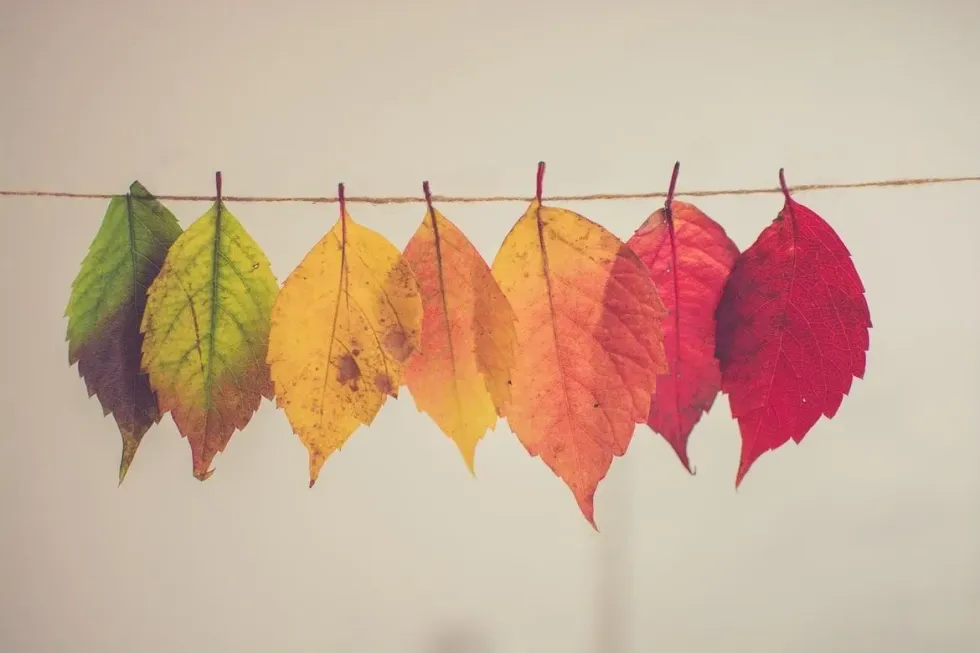Rising sun redbud trees are one of the many kinds of redbud trees.
Rising sun redbuds are mainly planted for their decorative quality. They also don't need a lot of maintenance.
Rising sun redbuds are mainly found in the eastern parts of North America. They are medium-sized plants that will give your garden an architectural beauty when planted in a group. They will give your garden or yard vivid colors starting from yellow, orange to pretty pink.
If you like this article, then also check out gala apple tree facts and red oak tree facts.
Plantation Method
Rising sun redbud trees are beautiful medium-sized trees that survive in most kinds of soils and can handle rising and dropping temperatures to a reasonable degree. Their growth is pretty good, and they need daily watering to thrive.
Rising sun redbud trees are not hard to maintain, but they require a good enough location and proper conditions to survive and thrive. The ideal times to plant the trees are fall and spring, specifically early spring. However, you need to check that the temperatures are not extreme and that the trees can be planted throughout the year.
The best location for the rising sun redbud trees is in well-drained soil, and usually, these trees have no soil preference. They are adaptable in all kinds of soil, only not in saturated soil.
It's even adaptable in acid or alkaline soils.
The tree needs to be planted at a place where the tree gets partial shade or full sun.
The location for the tree should be at least 6-8 ft (1.8-2.4 m) away from any existing structure, around 3 ft (1 m) away from any fences, and should be at least 5 ft (1.5 m) away from other competing grass, weeds, and plants.
Once a proper location is selected, you should dig a hole that is about three times wider than the diameter and about two times deeper than the depth of the root ball of the tree. You should rub the root system of these trees to loosen up the outer roots.
Once you have planted the tree, fill it halfway with soil and water. As the soil is wet, fill the rest the same way with soil and water again, settling the soil.
Use around 15 gals (56 l) of water. From then on, the tree has to be watered deeply for the first couple of months, at least twice a week.
Once it grows up a little, the tree becomes drought tolerant. Give the entire tree deep watering at least once a week during extended drought seasons.
You should use a balanced fertilizer or compost, like 5-10-5 in granular form in the early spring season, and a proper amount by releasing slowly when you're planting the tree. Spread the compost evenly around the plant's root zone according to the way instructed on the label.
Add two layers of mulch of a total of about 3-4 in (7.6-10.2 cm).
However, keep the upper surface of the mulch at least 4 in (10.2 cm) far from the trunk's base, which will prevent pests, rot, diseases, and fungus from appearing. The proper amount of mulch will conserve water which will aid in preventing weed and breaking down nutrients.
Cool Facts About The Rising Sun Redbud Tree
There are various kinds of redbud trees, and the rising sun redbud trees are one of the best. This compact-sized tree is mainly found in eastern North America. The beautiful colored flowers, foliage, and barks indeed look fantastic.
All kinds of redbud trees, including rising sun redbud trees, are a type of small tree or large deciduous shrub which is found in eastern North America, mainly from central Mexico in the east to California in the west and New Jersey to southern Michigan in the south to southern Ontario in the north.
All species of redbud trees belong to the legume plant family Fabaceae, and it's also considered Oklahoma's state tree. The trees have a certain charm due to their beautiful bark, summer, spring, fall foliage, and spring rising sun redbud flowers.
These flowers attract all types of butterflies and bees.
The best time to plant the rising sun redbud trees is in early spring, and they grow up at a moderate rate. If there are no extreme climatic conditions, a rising sun redbud tree can grow about 7-10 ft (2.1-3 m) in length within the first five to six years.
Even though they're short trees, they grow at least more than 1 ft (0.3 m) every year, but not more than 2 ft (0.6 m) in a year.
Most types of redbud trees have lavender-pink flowers. However, there are also varieties to them, and the different cultivars of the flowers that can be found are rosy pink, deep magenta, white flowers, and more.
The leaves also come with various colors, starting from chartreuse to dark green and deep purple foliage. The different species of redbud trees that can be naturally found are:
Merlot redbud tree: These plants are a hybrid of Texas White and Forest Pansy redbuds. These are not only drought and good heat tolerant, but they also have lustrous dark purple foliage.
Silver cloud redbud tree: Silver cloud redbud trees have white and rosy pink flowers with variegated foliage.
Rising sun redbud tree: These plants make the garden extremely beautiful with various colors as the new growth starts with an apricot color, which turns into charming golden yellow and ends with turning dark green.
Ruby falls redbud tree: These plants are perfect for small spaces. The trees have weeping habits with heart-shaped leaves and purplish-red flowers.
Lavender twist weeping redbud tree: The lavender twist weeping plants have small-sized rosy purple-colored flowers that look like pea blossoms in early spring. The weeping habit of the plants, the flowers, its trunk, and twisted, cascading branches look extremely beautiful.
Hearts of gold redbud tree: These plants have the most beautiful golden yellow foliage that changes into chartreuse in summer.
Ace of hearts redbud tree: These are the dwarf version of redbud plants perfect for small gardens. It doesn't grow more than 12 ft (3.6 m) and keeps its beautiful shape without maintenance.
Texas White redbud tree: These plants, along with another variety, 'Alba,' produces white flowers. Texas White plants have glossy, leathery, rich green, and bright green foliage, while alba has light green foliage.
Forest Pansy redbud tree: Forest Pansy redbuds have deep purple-colored foliage with rose-colored flowers. This foliage retains the deep burgundy color during summer.
Decorative Function
People mainly plant rising sun redbud trees for their decorative quality. These beautiful plants are not very large, so they make perfect ornamental trees for your garden.
Rising sun redbud trees are small trees that are smaller than other wild redbud trees. Rising sun redbud trees have showy flowers and foliage with a rounded crown.
They don't grow more than 15 ft (4.6 m) in length and 8-12 ft (2.4-3.6 m) in width on average.
The plant's hardy nature makes it able to grow in such places and weather conditions where other trees cannot grow. The textured bark of these trees is usually scaly and dark brown-colored, and the fall color of the plants is yellowish-brown to yellow.
All redbud trees are famous for the spring flowers that grow on them, and the rising sun redbuds are not different either. Usually, these rose-purple or purple-pink flowers bloom during mid-spring.
These vivid pink to light pink flowers lining the bare branches of the trees will make the landscape pink. Then the fading flowers give their way to orange, yellow, green, including darker and lighter green-colored foliage.
Usually, the new growth starts with orange-colored foliage and then to yellow. The flowers typically attract butterflies, honeybees, and many other pollinator animals.
The average mature height of these plants is 8-12 ft (2.4-3.6 m), and the average mature width is 6-8 ft (1.8-2.4 m). Because of this short height, these trees serve as good understory trees and look gorgeous if you plant them in a group.
The horizontal 'b' branching pattern of these trees can give your garden an architectural look and serve as a perfect canopy for spring bulbs.
Must-Know Facts About The Rising Sun Redbud Tree
Rising sun redbud trees are beautiful trees that can brighten up your garden. They are also easy to maintain, but you must remember these few things below so that these plants can thrive.
All types of redbud trees need water trickle for 10 minutes with a hose or deep watering at least twice a week for the first few months and then once a week. These plants are not only cold-hardy but also drought tolerant.
However, your trees will need deep watering more frequently during long-lasting drought seasons. They also require deep watering regularly during hot climates. However, please keep them in the full sun or partial shade.
They need partial or full sun, and they can be planted on the edge of a forest or at a shrub border. These plants can be cold-hardy to survive till the temperature of 23 F (-5 C).
Rising sun redbud trees don't need pruning. However, if you think it needs pruning, then prune the plant right after it has bloomed to remove the crowded, dead, crossed, and dying branches. If you prune it in winter, you will cause bloom loss.
The plants cost around $180. Once you buy it, you can plant it as a specimen tree in your garden or a small yard. The trees can be planted beside smaller flowering trees, like serviceberries or crabapples.
You have to take proper care of your plant to prevent pests and diseases. The most important parts of caring for your plant are choosing a good location, using fertilizers, and proper watering.
If your tree is not damaged, it won't have a Borer insect problem as they seek a weak spot or a hole in the tree to penetrate.
Mulching can help you with the prevention of weed building. An immobile insect that can affect your tree is the scale, and you will need to coat the entire tree with horticultural oil to keep them away.
Here at Kidadl, we have carefully created many interesting family-friendly facts for everyone to enjoy! If you liked our suggestions for rising sun redbud tree facts, then why not take a look at are pistachios tree nuts or how do trees grow?








